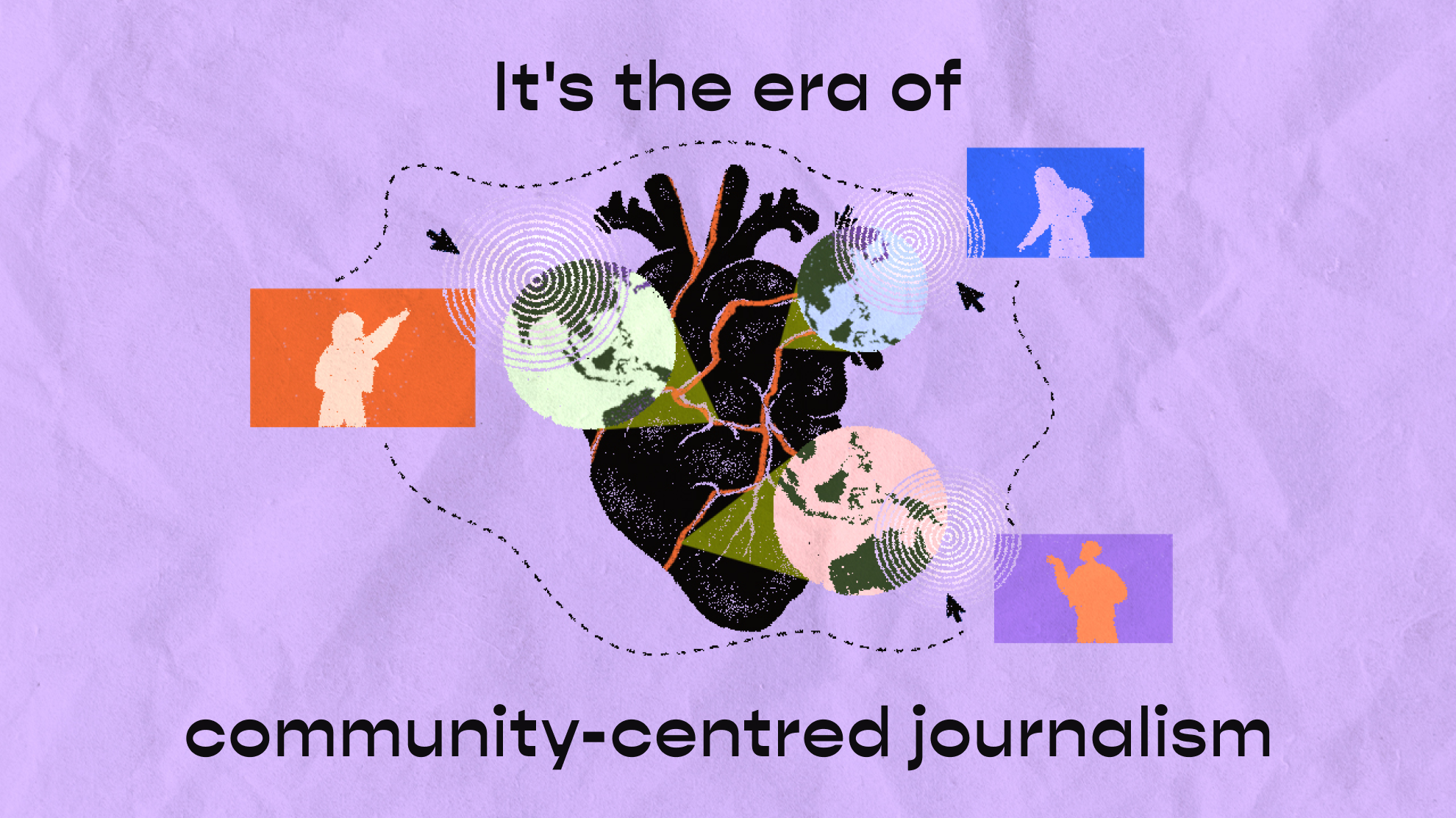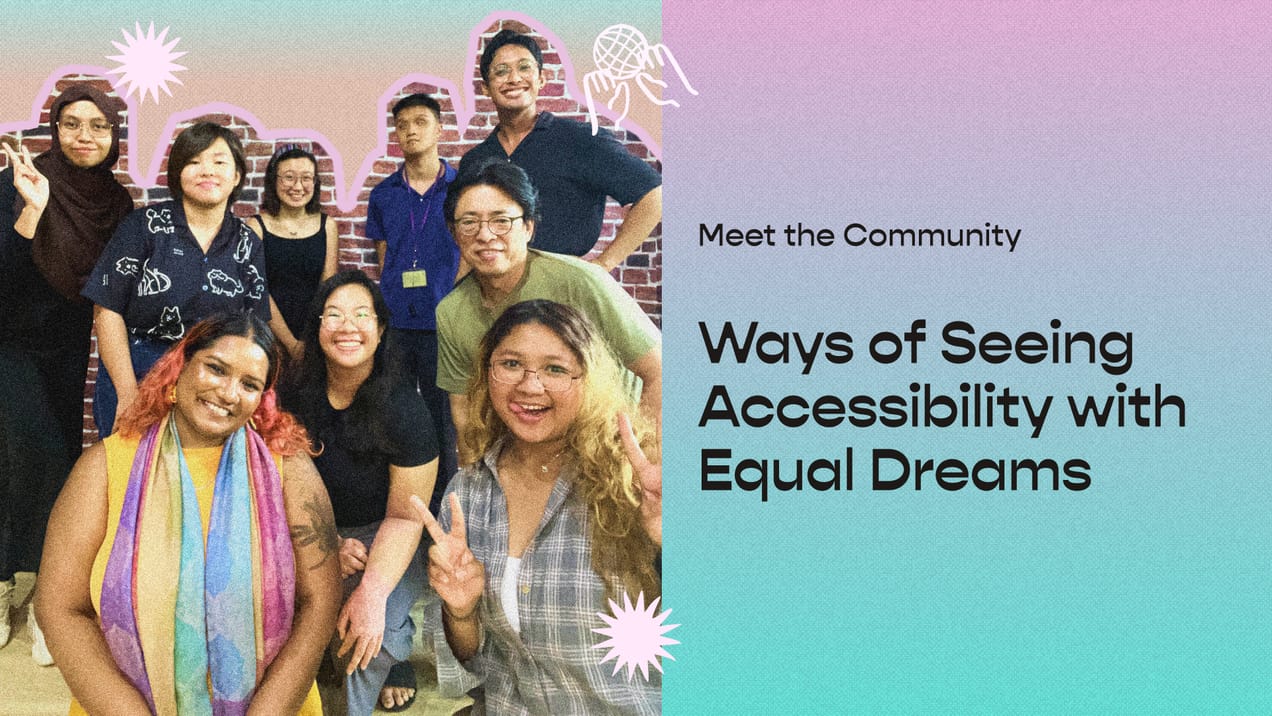
It's the era of community-centred journalism
For a long time, journalism was often pictured as a solo endeavor. The mention of the word “journalist” may conjure up an image of a solitary writer squinting at a screen in a dark room, typing furiously on their laptop to churn out the next ground-breaking piece. To some extent, this image does reflect the reality of modern-day journalism. But things are also quickly changing.
Instead of writers typing away at a computer, modern journalism can now look incredibly different—it could be a talking head in front of a camera, or a multimedia piece featuring illustrations and interactive elements. Behind every story, there is a team of individuals working tirelessly to shape and co-create it. Editors provide valuable insights, illustrators breathe life into the narrative, and marketing teams ensure the piece reaches its intended audience. Journalism has become a collective effort, a far cry from its perception of an individual endeavor.
The need for more individuals to participate in journalism has never been more pressing, especially in Asia's media landscape, which is rife with issues of inadequate coverage and parachute journalism. More individuals need to play an active role in shaping the coverage of their regions and communities, and these are people who not only possess an intimate understanding of the intricacies and nuances of a subject but also are wary of its sensitivities.
In this new era of media, community-centred journalism will partially address some of these challenges. Yet, to demand this of an industry that has witnessed consistent layoffs and has been mocked to be on its deathbed is a tall ask.
News is dying, people say! The reasons are valid; traditional news models have been following a top-down “we write it, you read it” model, which has been losing its cultural relevance. No wonder people turn to more interactive, two-way channels such as social media platforms to get their news. Especially in Southeast Asia, where the media is often dominated by state interests, it’s understandable why people look towards more community-driven social platforms for information. Social media penetration for most countries in the region is almost always above 50%, and it was discovered that three out of four people who use Twitter rely on it for news. In fact, social media has become so essential that it has played host to some of the biggest mass movements in the region, including the Milk Tea Alliance Movement and the people’s movement against the junta government in Myanmar.
So, what lessons can we learn from people’s increasing reluctance to consume traditional forms of news and their inclination towards more social platforms?
It’s clear—journalism must be community-centred and driven by the relationship between readers, writers, and the people on the ground. This means receiving feedback from the consumers and partners, involving major institutions and grassroots organisations, and even getting the community involved to help to source data and proofread. This is what we do here at Kontinentalist—as an organisation focused on data storytelling in a region with limited data availability, we heavily rely on the community to publish meaningful and thoughtful stories. Our most impactful stories have been collaborations with low-income communities and feminist groups, and several other big pieces involved crowdsourcing suggestions from our readers and followers. To ensure our narratives are grounded in reality, we aim to break down barriers between who can and cannot tell their own stories, valuing all forms of expertise within the community.
Collaboration should extend to the internal practices of journalism as well. While we typically associate journalism with the written word, the rise of platforms such as Instagram, TikTok, and Twitter has expanded possibilities and made stories reliant on more than the writer. In this ever-evolving landscape, we need to draw upon diverse disciplines and skill sets to create compelling articles. Journalists like Sophie Smith Galer are shifting the idea of what journalism could look like in this new era. Print may be dying (much to the chagrin of my own tactile-biased sensibilities), but the digital realm presents an exciting space to explore. In fact, it is through the collaborative efforts between our in-house writers, designers, and developers that bring some of our best stories to life.
As media outlets grapple with challenges like inadequate coverage and parachute journalism, community-centred journalism emerges as a powerful solution. By involving readers, partners, and communities in the storytelling process, we can start to shift our journalistic practices towards a place where it is more inclusive, authentic, and reflective of the realities on the ground. If we leverage the collective strength of diverse voices, journalism will not only survive in its waning relevance, but also emerge as a way to build bridges and create more informed and critical readership.


